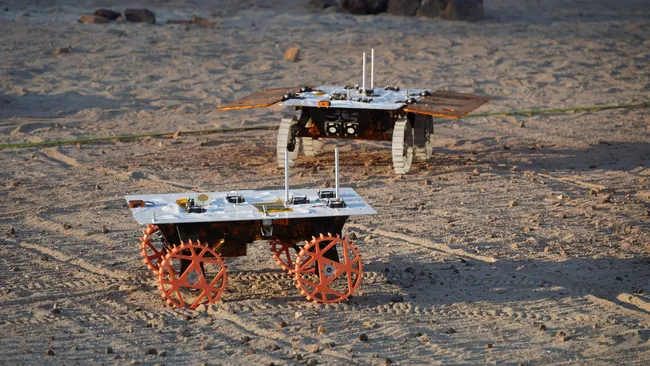Japan tries to revive moon shuttle after 2am
- March 26, 2024
- 0
Japan’s space agency said Tuesday it will try to repair the lunar lander following its second cold lunar night in two weeks following last month’s surprise awakening. The
Japan’s space agency said Tuesday it will try to repair the lunar lander following its second cold lunar night in two weeks following last month’s surprise awakening. The

Japan’s space agency said Tuesday it will try to repair the lunar lander following its second cold lunar night in two weeks following last month’s surprise awakening. The unmanned Intelligent Lander (SLIM) for Lunar Exploration landed at a shaky angle in January, causing its solar panels to point in the wrong direction.
When the angle of the Sun changed, it came back to life for two days and made scientific observations on the crater with a high-quality camera. But the probe, which was not designed for two weeks of freezing lunar nights when temperatures dropped to minus 133 degrees, was shut down in early February. He was then woken up weeks later and put back to sleep before another attempt at surgery in early March.
The Japan Aerospace Exploration Agency (JAXA) said Tuesday it hoped “there will be enough solar cells to launch SLIM tonight.”
“The project team will begin work today to restart SLIM after the second lunar night,” said a post on X, formerly Twitter.
JAXA added that it is unknown whether SLIM will respond on Tuesday night due to its exposure to extreme temperatures.
A U.S. unmanned lander called Odyssey, the first private spacecraft to land on the Moon, failed to wake up even though its solar cells were predicted to receive enough sunlight to turn on the radio, its manufacturer said Saturday.
SLIM, nicknamed the “Lunar Sniper” for its precision landing technology, touched down at the target landing site on January 20. The achievement was a victory for Japan’s space program after a series of recent setbacks, making it the fifth “soft landing” on the moon, following the United States, the Soviet Union, China and India.
The mission’s goal is to investigate the part of the Moon’s mantle (usually the deep inner layer beneath its crust) that is thought to be accessible.
NASA plans to send astronauts back to the moon later this decade. The United States, along with its international partners, wants to create long-term habitats in the region by harvesting polar ice for drinking water and rocket fuel for future trips to Mars.
Source: Port Altele
As an experienced journalist and author, Mary has been reporting on the latest news and trends for over 5 years. With a passion for uncovering the stories behind the headlines, Mary has earned a reputation as a trusted voice in the world of journalism. Her writing style is insightful, engaging and thought-provoking, as she takes a deep dive into the most pressing issues of our time.